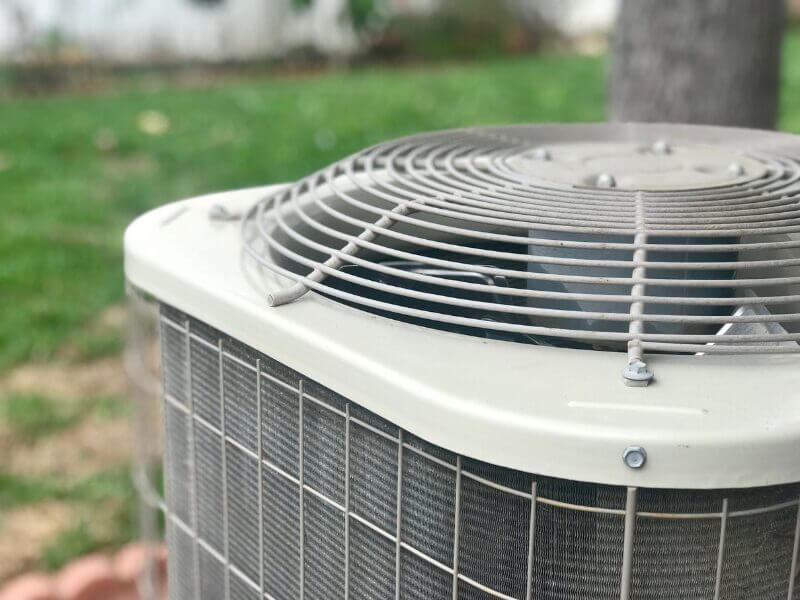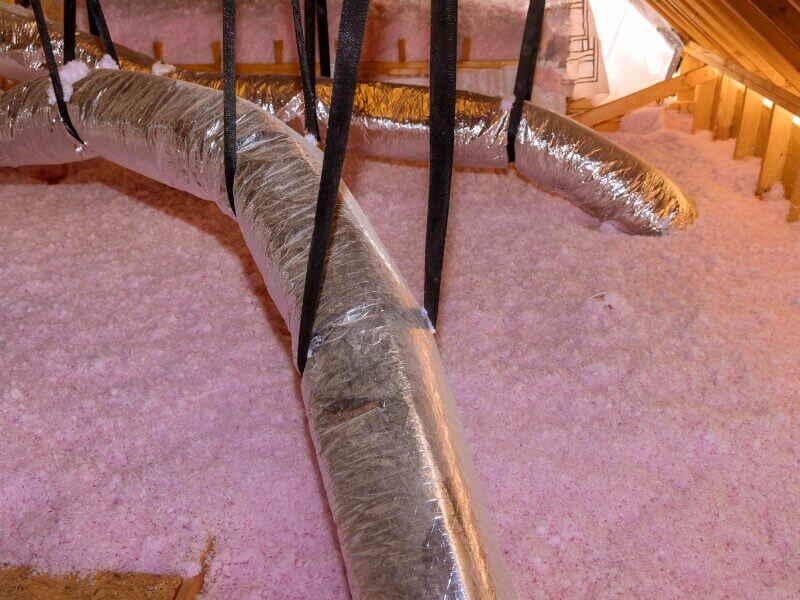The dreaded summer electricity bill. As the temperatures begin to rise, your electric bill usually follows right along with it. Warmer temperatures mean air conditioners run all day and all night, and that can add up to some hefty power bills. Follow these tips to keep your electric bill down in summer.
Your electric bill goes up in the summer because your air conditioning is working hard to cool your home. And cooling your home accounts for over 50% of your electricity bill. You may also have a change in habits, especially if you have school-aged kids that are normally away from home during the day.
9 Ways to Lower Your Power Bill in Summer
- Maintain Your Air Conditioning System
- Block the Sun with Blinds and Drapes
- Use a Smart Thermostat to Control HVAC
- Use Ceiling Fans in the Room You’re In.
- Shift Your Home Office to the Cooler Side of Your Home
- Insulate and Ventilate Your Attic
- Get Out of the House
- Change Up Your Menu
- Check Your Electricity Plan Options.
Maintain Your Air Conditioning System
Air conditioning can be up to 50% of your electricity bill, and possibly even more during the summer months. Some easy maintenance steps with your air conditioner can help it work much more efficiently.
- First, change the air filter so that air flows properly through your A/C unit.
- Second, be sure your outside condensing unit is free of leaves, yard clippings, and other debris.
- Finally, a periodic air conditioning tune-up will ensure proper coolant levels in your system, drains are clear, and your system is operating properly.
If you need to maintain window AC units, the approach is similar. Focus on cleaning the air filter, evaporator coil and condenser coil. You’ll need to remove the unit from your window, unplug it and check your users manual or YouTube to locate the coils. Once located, clean-up requires a soft-bristle brush, a soft cloth and a spray bottle filled with a mixture of warm water and a few drops of dish soap.
TIP: Get more A/C cooling tips from our HVAC Experts with our article “9 Experts Reveal How to Keep Your A/C Running Cold this Summer.”

Block the Sun with Blinds and Drapes
You’ll spend less money on air conditioning if your home is cooler inside to begin with.
Keep the heat outside by covering windows during the day to block out the sunlight.
Energy efficient window treatments such as blinds, awnings, and window tinting, especially on east and west facing windows, can significantly reduce UV ray penetration and help keep your home cool.
Solar shades, while a bigger investment, can substantially block heat from your home. And in a pinch? Cover cardboard with aluminum foil and place those against the glass to reflect the sun and heat (but beware of your HOA if those windows face the street!)
South-facing windows get more heat then north side windows. So if you have a limited budget, focus your attention on the south side of your home.
Use a Smart Thermostat to Control HVAC
With a smart thermostat, you can set a predictable routine for your home, automatically adjusting the thermostat up when you leave, and precooling your house when you’re on the way home. You can manage the thermostat from your phone if plans change. And you can switch to vacation mode from the beach.
What temperature you set your thermostat on matters a lot. Our recommended best thermostat settings for summer suggest setting the temperature to 76°-78°.
How much does a smart thermostat cost? A smart thermostat will cost $100 to $300 depending on the model you purchase. If you aren’t a DIYer, installation may cost an additional $75-$100. But savings will add up fast.
How much can I save with a smart thermostat? According to EnergyStar.gov, smart thermostats can save 8% of your heating and cooling bills. Some independent studies have shows savings of up to 30% on this part of your energy expense. Here’s the math: If your electricity bill is $200 a month, heating and cooling is 50% and your smart thermostat cuts your heating and cooling costs by 15%? You’ll save around $15 a month.

Use Ceiling Fans in the Room You’re In.
Use fans to stay cool at home. In the debate of fans vs. air conditioning, use air conditioning to cool your home and fans to feel cooler in the room you occupy.
You know that “feels like” temperature that they talk about on winter forecasts? A fan will drop your feels like temperature by 4 degrees. Really! Use a higher speed on the fan to create a stronger breeze, making you feel even cooler.
Also, be sure that your ceiling fans spinning counter-clockwise in the summer to create that cooling downward airflow.
Keep in mind that fans cool people, not rooms, so turn them off when you leave.
Important: If your inside home temperature is 95* or higher, fans won’t help keep you cool, as the temperature is too close to your actual body temperature. Go to a cooling center in your area!
Shift Your Home Office to the Cooler Side of Your Home
If you are working or schooling from home, you may have designated a certain area of your home as the office.
You’ll have the most energy efficient home office if you set it up on the north or east side of your home. You’ll avoid the afternoon sun that can heat up rooms in your house. That way you won’t feel the need to kick on the A/C every afternoon.
If relocating your work set-up isn’t feasible, invest in solar shades or insulated curtains for your office area.
Insulate and Ventilate Your Attic
Your attic could be the source of heat in your home, especially if the attic door doesn’t close securely.
Your attic is designed to heat up, with ventilation that allows air to circulate. But if you have insufficient insulation between the attic floor and your ceiling, that heat could enter your home.
- You should have at least 7 inches of insulation in your attic, according to the US Department of Energy.
- Lower the temperature in your attic by adding ridge and soffit vents
- Add insulation on your attic door, or add an attic tent, which serves as a barrier between your attic and your interior.
If you are elderly or low income, contact your local utility company to find out about low cost or free insulation and energy efficiency programs.

Get Out of the House
Summer is a great time to enjoy the outdoors with your friends and family. Hit the pool, plan barbecue dinners, and spend mornings and evenings outside. The longer days also allow you to be more active and get in some cardio.
While you’re out having fun, your lights will be off, your appliances won’t be running and your air conditioners can take a break, saving you money in multiple ways. Or head to the movie-theater to check the latest summer blockbuster. You’ll be cool and comfortable in their air conditioning.
For a budget-friendly option, look for community centers and libraries that offer a cool respite and summer programs for both kids and adults. Movie day at the library? Check. Adult coloring classes at the community center? Yes.
TIP: Have a backyard swimming pool? After your HVAC, it’s the biggest user of electricity in your home. But you can cut your pool’s power use by 80% of more by switching to a variable speed pool pump.
Change Up Your Menu
Take advantage of the great variety of foods available in the summer by changing your menu to lighter fare. Skip the deep-frying and cook foods on the grill for a different (and healthier) option.
Eat more salads, enjoy cold suppers, and ban the oven until summer turns to fall. You’ll keep your home cooler while saving money since you won’t be preheating large appliances.
Or go for counter-top cooling. Crockpots, counter-top convection ovens and air fryers are all options to keep your kitchen cooler.
Check Your Electricity Plan Options.
This tip is for those who live in a deregulated electricity market like Texas, Ohio, Connecticut and Pennsylvania.
When’s the last time you checked your electricity plan? Perhaps your electricity plan has expired and you’re paying higher month-to-month electric rates. Researching your electricity provider options can save you a lot of money on your electric bill.
By checking the available options, you can find which companies offer cheaper electricity rates, and you may find some that offer a bonus or more flexible plan than the one you have now.
Comparing your current plan with the others once or twice every year is always a good idea. We also recommend that you shop every time your plan expires, to make sure you’re getting a good deal.
For more money saving energy tips, check out these additional articles:
Best Thermostat Settings for Summer
Best Thermostat Settings for Vacation
Common Energy Wasting Mistakes Around the Home
89 Ways to Save on Your Electricity Bill
